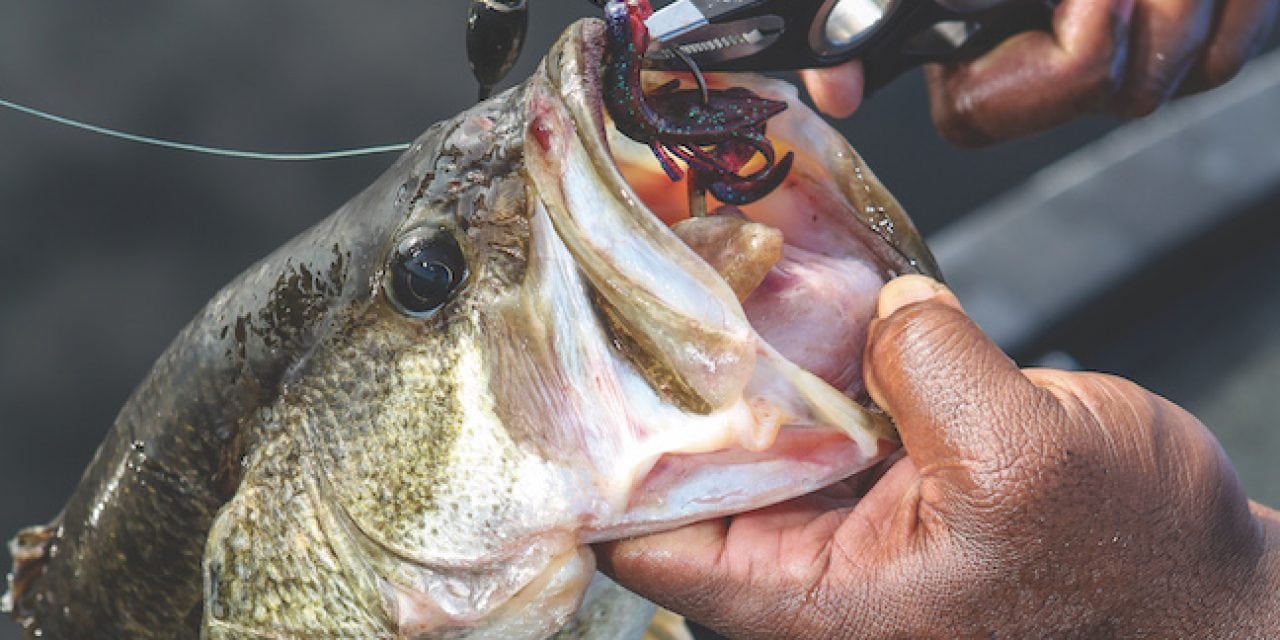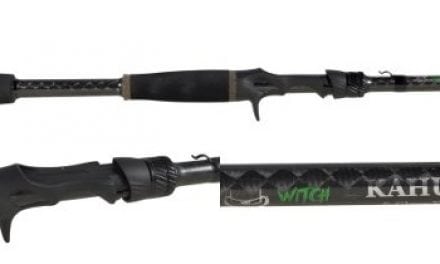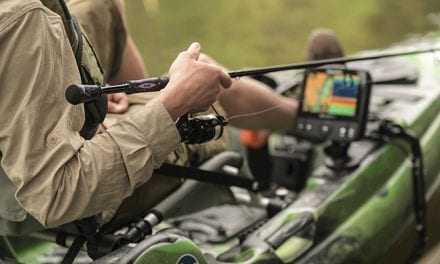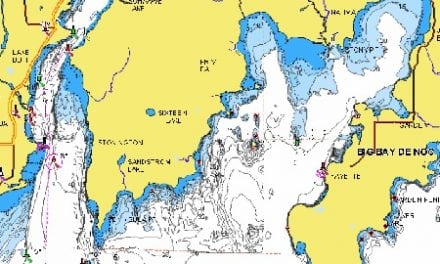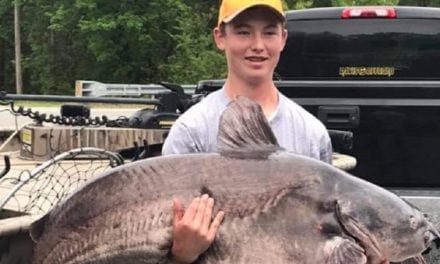Check out these top Pennsylvania fall fishing hot spots.
Like many sportsmen, I’d love to extend the fall season an extra month or two. There is just so much to do. Autumn’s angling options are often overlooked as folks take to the forests and fields in search of whitetails, turkeys and small game.
To help you maximize your limited “outdoors” time this fall, here’s a look at several good angling options spread across the Keystone State.
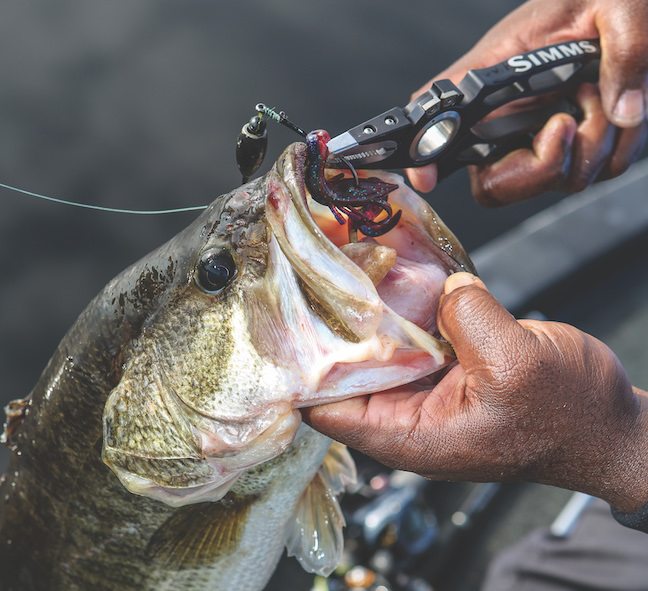
Largemouths outnumber smallies in Pymatuning. (Photo by Ron Sinfelt)
PYMATUNING BASS
Spanning the Pennsylvania/Ohio border, sprawling Pymatuning Lake is best known for its solid walleye, muskellunge and crappie resources. But it also supports a good black bass fishery, one comprised of both largemouth and smallmouth. Early to mid-fall is a good time to catch them.
Largemouths outnumber smallies in Pymatuning, more so recently, according to fisheries surveys by the two state resource agencies that share the management of the lake. But the brown bass often reach impressive sizes — 3 to 5 pounds — and show up most consistently this time of year.
One of Pymatuning’s most significant forage species is gizzard shad. Gizzard shad don’t handle dramatic drops in water temperatures well. After clear, cold nights when air and water temperatures nose-dive, many shad are left stunned, some even dying. This makes for easy pickings for opportunistic species such as smallmouth bass. They’ll often gang up near shallow flats and points, keying in on the abundant food supply that struggles close to the surface.
Key ambush spots are long, gravel points and flats that taper off gradually into deeper water. We’re talking water 3 to 4 feet deep, often with some green milfoil/curly pondweed present. If you’re a springtime walleye angler on Pymatuning, the areas where walleyes spawn — and wading anglers target — are the spots to zero in on for the fall smallie bite.
When conditions are right, you’ll notice surface activity as smallmouth corral baitfish. Also, seagulls and terns might be present, they too take advantage of the aquatic buffet. Feeding frenzies can be short-lived, or extend for multiple hours. Even when conditions are less than ideal, it’s likely some brown bass will be nearby. The action can be consistent, but not at the fever pitch encountered when you hit things just right.
Though prime types of areas are found scattered around the lake, some good examples include the rounded gravel points found between the Espyville/Andover causeway and the Orchard launch, along the east (Pennsylvania) shore. Similar cover is located south of the causeway on the west (Ohio) shore, near the New Bowers boat ramp, as well as proximate to the Ohio State Park campground.
Extremely shallow-running crankbaits, spinnerbaits, vibrating jigs (Chatterbait-style lures) and topwaters such as the River-to-Sea Whopper Plopper can all produce. Soft-bodied jerkbaits, known generically as “flukes” to most anglers, also fare well, especially over weedy areas.
When the smallies aren’t cooperating, Pymatuning’s largemouths can fill the void well. The lake is well known for its chucky, football-sized green bass that average 2 pounds, though fish in the 4- to 5-pound range show up consistently.
This lake’s largemouths love shallow wood. Shoreline wood laying in 2 or so feet of water typically hold a few bigmouths. Pitchin’/flippin’ tactics that present skirted jigs, as well as various soft-bodied profiles (worms, beavers, craws) all produce. Some days the bass show a preference for one shape/color over another, so be willing to experiment — and have the patience to slowly pick cover apart.
Pymatuning covers around 16,000 acres. It has a 20-horespower restriction. Boat anglers can fish with either a Pennsylvania or Ohio license, though shore anglers must have the license for the state being fished from.
Boat ramps are well scattered around the lake. Some of the better ones include Linesville, Wilson, Manning, Espyville, Orchard, Snodgrass, Jamestown, Birches, Ohio State Park Campground, and New Bowers.
This lake sees comparatively light fishing pressure in the fall, though one will share the lake with waterfowlers as fall progresses.
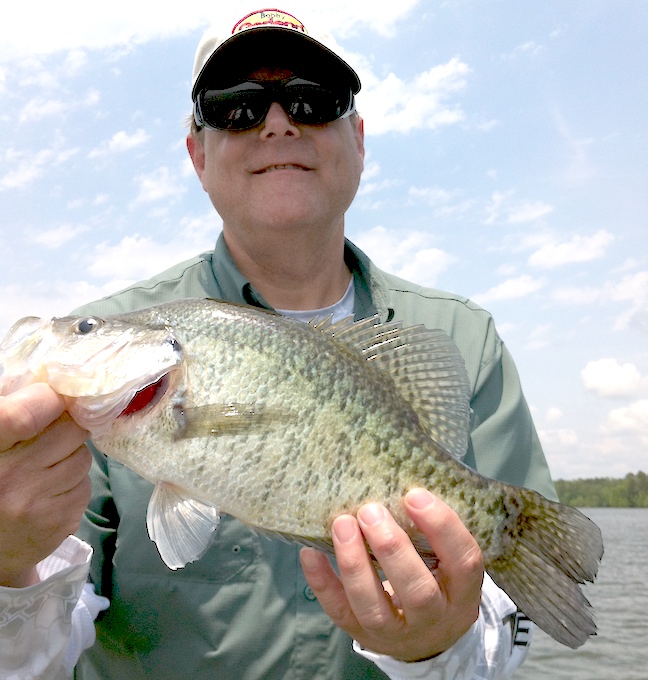
From mid-summer through early October, find crappies relating to deep weedlines in Conneaut Lake. (Photo by Scott Bernarde)
CONNEAUT LAKE CRAPPIES
Conneaut Lake is Pennsylvania’s largest natural lake, nearly 1,000 acres in size. It packs a lot of habitat into a relatively small area. One will find shallow bays with floating vegetation; deep weedlines of coontail and cabbage weeds extending out into depths in the 10- to 12-foot range; and hard-bottomed humps that top off in depths that preclude weedgrowth.
This abundance of cover and structure plays well to Conneaut’s gamefish and panfish populations. It supports a bass population comprised of both largemouths and smallmouths, with trophy-size fish of both colors available. It’s also one of the state’s better northern pike lakes. But from late summer through fall, with an October hiatus, fishing guide Darl Black focuses on Conneaut’s crappie fishery.
From mid-summer through early October, Black finds crappies relating to deep weedlines.
“Sometimes they will also move out in open water to force baitfish into a trap on a weed point,” Black noted. “Casting small jigs works.”
Black’s summer crappie patterns tend to be productive through the end of this month, perhaps into the first week of October. As the days in October pass by, Conneaut, a deep-water lake that stratifies, begins its annual fall transition, culminating in the turnover. Crappies are on the move; the crappie fishing inconsistent. Conditions stabilize by late October, following the turnover, at which time Black said the deep-water crappie bite is setting up.
“At this point schools of crappies are moving into 20 to 40-foot depths on rock outcroppings found along points and mid-lake humps,” he said. “They respond to flashy jigging lures.”
Since smaller crappies are part of the late fall mix, and many don’t survive after being winched up from the depths, Black prefers not to target crappies during late fall outings.
Conneaut has no horsepower restriction and experiences heavy recreational boating activity during peak periods. This diminishes somewhat as fall progresses. The Fish and Boat Commission has a fine access ramp. There is also one near the town of Conneaut Lake, known locally as Fireman’s Beach.
For information on late summer-through-early October crappie guide trips on Conneaut visit www.blackwolfecommunications.com.
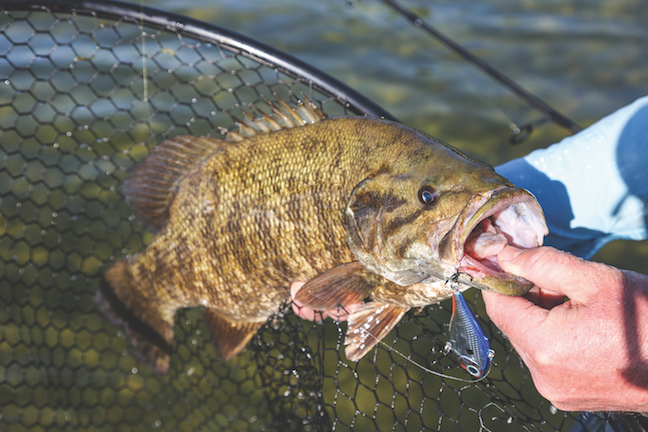
Find a lake with woody cover in the fall and you’re in a good spot for bass. (Photo by Ron Sinfelt)
LAKE WALLENPAUPACK BASS
One of the state’s more popular multi-use lakes — it is set in scenic Pocono Mountains of Northeastern Pennsylvania — Lake Wallenpauck continues to provide excellent fishing. Early fall is a good time to cash in on its bass action.
“Wallenpaupack is a typical highland reservoir, one with a very diverse fishery,” noted Deron Eck, a veteran tournament angler who has a consistent record while fishing events throughout the northeastern U.S. “I find it similar to Raystown Lake. Down toward the dam the habitat is rockier, with lots of points. Uplake, toward the incoming river, you will find more weedbeds, channel turns and boat docks. And there are a lot of fish in it, of many species. Besides the smallmouth and largemouth bass, there are stripers, walleyes and tons of yellow perch.”
Last year, Eck scored well during an early fall tournament there, elevating his status to such that he represented the state in the next level of regional competition. His experience there is indicative to what one might expect, when fall conditions often rapidly change.
“During practice, I found lots of bass in the uplake section, mostly around weedbeds,” he said.
Looking for largemouths, Eck caught not only green bass but smallmouth as well. Many of the lake’s weedbeds were dying off at that time, but he located standing green weeds on his GPS and saved their locations as waypoints. Then, using a 3/8-ounce swimming jig with a chunk trailer, he scored well on both species slow-rolling the combo in and around the weedbeds. Only the green weeds were productive. Jig-trailer combos of green pumpkin and blue-black worked best. Conditions during practice were sunny. Beside the swimming jig, he also did well flipping a tube in the weeds.
“Come tournament time the weather turned cloudy and rainy,” Eck recalled. “The weed bite died.”
Eck began targeting rocky points, ones he’d located with the side-scanning feature of his sonar. Again, he marked them on his GPS, around 10 spots in all.
“I caught bass on suspending jerkbaits and medium-running crankbaits,” he noted. “They were almost all smallmouth, and really nice fish.”
Eck said the jerkbait bite was best when it was actually raining. He used the crankbait, a Bandit 200, to target the transitional area out off the points in 4 to 6 feet of water.
Wallenpaupack is located along the Wayne/Pike county border. There is no horsepower restriction, and boat activity can be intense. PPL, the utility company that owns the lake, has ramps at Ironwood Point, Caffrey Recreation Area and Wilsonville. The Fish and Boat Commission has an access area near the dam, on the Wayne County side. There are also a couple private access areas.
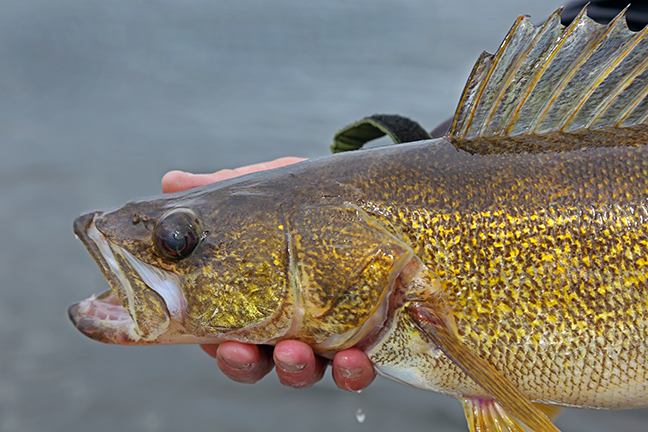
Walleye activity on the Allegheny picks up once the water temperature drops down to about 50 degrees (Photo By Ron Sinfelt)
ALLEGHENY RIVER BASS & WALLEYES
Some of the best river fishing of the year takes place in the fall, the Allegheny included. In general, smallmouth action tends to remain good to excellent throughout the fall, until water temperatures drop below 40 degrees. Walleye activity picks up once the water temperature drops down to about 50 degrees and stays relatively consistent until ice-up.
The best bass fishing is on the middle Allegheny, from around Warren down to East Brady. This takes in over 100 miles of river. The middle Allegheny is a natural, free-flowing river, with riffles, runs and pools. During the early part of the fall the best smallmouth fishing is often along the edges of riffles, and within the moderate current of the runs. As things cool down, bass gravitate to the slower, deeper pools. This transition generally takes place starting around late October.
Early fall bass fishing is often an extension of summer tactics, plying the shallows with soft-bodied jerkbaits and high action suspending hard jerkbaits like the Rapala X-Rap. Soft swimbaits can also excel. As fish move into deeper, slower spots, bottom baits like tube jigs, bucktail jigs and twister tail jigs come into their own. These presentations also work on walleyes, which share these protected deeper areas with brown bass. Bass will often move up onto rocky flats adjacent to deeper pools. Swimbaits and jerkbaits often work best, though need to be fished at a much slower pace.
The middle Allegheny contains many shallow riffles, navigable at average levels only with a jet-drive boat. Boat access areas include Starbrick, Buckaloons, Tidioute, West Hickory, Tionesta, President, Oil City, Franklin and Parker.
The lower Allegheny provides differing habitat, as it’s impounded by eight lock and dam systems over its 70-odd-mile course. Walleyes show up in great numbers at times. In general, one should expect to catch more but smaller walleyes in the lower Allegheny, and fewer but larger ones in the middle Allegheny. Both areas though hold 10-pound walleyes. Bass are present too, but due to the difference in habitat don’t provide as consistent action as the middle river.
The best lower Allegheny River walleye action starts when the water drops down into the low 40s. At this time the fish will have moved into slackwater pools. Jig and minnow combinations and blade baits work well in these areas. Suspending jerkbaits sometimes score when walleyes move up on nearby shallow flats. Fish taken there are often larger ones.
Lower Allegheny River access areas include East Brady, Templeton, Cowanshannock, Rosston, Freeport, Harmar and Sharpsburg.
For information on guide services on both the middle and lower Allegheny River, visit www.keystoneconnection.com.
The Allegheny is just one of several major rivers in the state that offer excellent fall bass and walleye fishing. Two others are the Juniata and Susquehanna. For information on guide services on these two river systems contact: www.koinoniafishingguides.com (Susquehanna); or www.susquehannasmallmouthguides.com (Susquehanna and lower Juniata).
SHALLOW-WATER CRANKBAITS
Early fall bass patterns like those on Pymatuning and Wallenpaupack should contain crankbaits, including shallow ones.
Most bass anglers would shudder at the thought of throwing an expensive crankbait — one that might have cost as much as a fishing rod twenty years ago — into a shoreline laydown. If you want to fish a moving bait around such cover you use a spinnerbait, right?
Not so much anymore. Shallow running crankbaits like Lucky Craft’s RC 1.5 and Strike King’s KVD 1.5 give anglers the option of showing brush-dwelling bass a crankbait with minimal chance of a hang-up.
“Baits like these have a moderate wobble,” explained tournament veteran Deron Eck. “They come through the cover as well as a spinnerbait. They are very buoyant and deflect off cover well, providing an erratic action when coming through the brush. They also work well around weeds, where you contact the cover, and then rip the bait free, allowing it to float up away from the vegetation. That’s when you’ll get most of your strikes, after the bait clears the cover and floats up.”
Eck said it’s the square shape of the bill that keeps these types of baits from hanging up in brush. They fish well on heavy line. He typically uses 17-pound test.
“The square bill flares out,” he said. “When it hits a piece of wood the bill kicks the bait away from the snag.”
More on Fall Fishing
- Hot Fall Inshore Fishing for Reds, Trout, Flounder & More
- 5 Top Fall Fishing Trips in Illinois
- September Shift: Fall Crappie on the Move
- Florida’s Fall Fishing Bonanza
The post Prime Fall Fishing Trips in Pennsylvania appeared first on Game & Fish.

